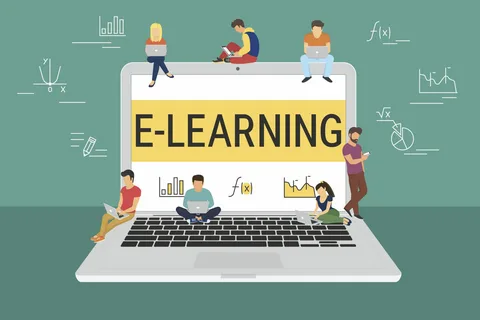How to Use AI Voice in E-Learning Content Creation
Artificial intelligence (AI) voice technology is transforming the landscape of e-learning content creation, offering innovative solutions to enhance learner engagement and accessibility. In this digital era, the integration of AI voice in educational materials has become increasingly prevalent, revolutionizing the way information is delivered and absorbed. This article delves into the realm of AI voice technology in e-learning, exploring its benefits, best practices, tools, challenges, future trends, and real-world case studies. Join us on a journey to discover the potential of AI voice for revolutionizing e-learning experiences.
1. Introduction to AI Voice Technology in E-Learning
Understanding AI Voice Technology
AI voice technology in e-learning refers to the use of artificial intelligence to enable voice interactions between learners and educational content. This technology allows for a more intuitive and engaging learning experience by integrating voice commands, responses, and feedback into educational materials.
2. Benefits of Incorporating AI Voice in E-Learning Content Creation
One of the key benefits of incorporating AI voice in e-learning is enhanced accessibility and inclusivity. By providing voice-driven interactions, learners with visual impairments or disabilities that prevent traditional text-based learning can access educational content more effectively. Additionally, explore the best AI tools that can be utilized to create engaging, voice-driven content, making learning more interactive. AI voice technology also allows for personalized learning experiences by tailoring content delivery based on individual preferences and learning styles.
3. Best Practices for Implementing AI Voice in E-Learning
When implementing AI voice in e-learning, it is essential to optimize content for voice interaction. This involves structuring materials in a conversational format, using clear and concise language, and incorporating natural language processing techniques to enhance the user experience.
To maximize the effectiveness of AI voice technology in e-learning, it is crucial to ensure voice recognition accuracy. This includes training the system with diverse voice samples, minimizing background noise, and providing feedback mechanisms to refine the accuracy of voice commands and responses.
4. Tools and Platforms for Creating AI Voice-Enabled E-Learning Content
Popular AI Voice Tools and Platforms
There are several advanced AI voice tools and platforms available for creating AI voice-enabled e-learning content. These tools provide diverse features for generating lifelike voiceovers, enabling interactive voice commands, and enhancing the learning experience through audio elements. Key features to look for include high-quality voice synthesis, multiple language options, and integration capabilities with various e-learning management systems. Evaluating these aspects will help you select the tool that best fits your educational content needs. If you’re searching for a cost-effective solution, consider using a free AI voice generator. This tool allows you to create authentic male and female voice narrations without any cost. It offers a straightforward way to produce high-quality voiceovers for your e-learning materials, making it easier to engage learners and improve accessibility. This free option is ideal for educators and content creators who need to enhance their e-learning content efficiently while keeping expenses low.
5. Overcoming Challenges in Using AI Voice for E-Learning
In a world where Alexa might be listening to your private conversations, addressing privacy concerns around AI voice in e-learning is crucial. Users need assurances that their data is secure and not being misused or shared without consent. Implementing robust encryption, data anonymization, and clear privacy policies can help build trust with users.
Just like a missed note in a Karaoke song, AI voice technology can sometimes fumble over words or mispronunciations, leading to technical limitations and errors. Ongoing monitoring, regular updates, and quality control measures can help minimize these issues. Additionally, providing users with options to give feedback can contribute to refining the AI voice system over time.
6. Future Trends and Innovations in AI Voice Technology for E-Learning
As AI voice technology evolves, advancements in natural language processing (NLP) will play a key role in enhancing interactions between users and AI systems. Improved understanding of context, sentiment analysis, and personalized responses are on the horizon, making e-learning experiences more engaging and effective.
Imagine a future where AI voice seamlessly integrates with virtual reality (VR) and augmented reality (AR) technologies, creating immersive e-learning environments. This integration could revolutionize how learners interact with content, allowing for hands-free exploration and interactive experiences that cater to diverse learning styles.
7. Case Studies: Successful Integration of AI Voice in E-Learning
Case Study 1: Company XYZ’s Implementation of AI Voice in Training Modules
Company XYZ revolutionized its training modules by integrating AI voice technology, providing employees with interactive and personalized learning experiences. The AI voice system not only boosted engagement but also improved knowledge retention, demonstrating the effectiveness of AI-powered e-learning solutions.
Case Study 2: University ABC’s Adoption of AI Voice for Remote Learning
University ABC embraced technology to enhance remote learning experiences for students, breaking down geographical barriers and fostering a more interactive online classroom environment. By leveraging AI voice for lectures, quizzes, and student support, University ABC saw increased student participation and performance.
8. Conclusion: Harnessing the Power of AI Voice for Enhanced E-Learning Experiences
In the symphony of e-learning, AI voice technology plays a harmonious role in enriching educational experiences. By overcoming challenges, embracing future trends, and showcasing successful case studies, it’s evident that AI voice has the potential to transform how we learn and teach. As we continue to harness the power of AI voice, let’s strive to create e-learning environments that are not only educational but engaging, interactive, and tailored to individual needs.
In conclusion, the utilization of AI voice technology in e-learning presents a promising pathway toward more interactive, personalized, and efficient learning experiences. As we continue to embrace and harness the power of AI voice, the future of education is poised for transformational growth and innovation. Let us embark on this exciting journey of integrating AI voice technology into e-learning, paving the way for a dynamic and engaging educational landscape.




![lab 2 underground apk[Download latest version ]](https://quellpress.com/wp-content/uploads/2023/08/LAB2-UndeR-GrounD-APK-768x432.webp)

